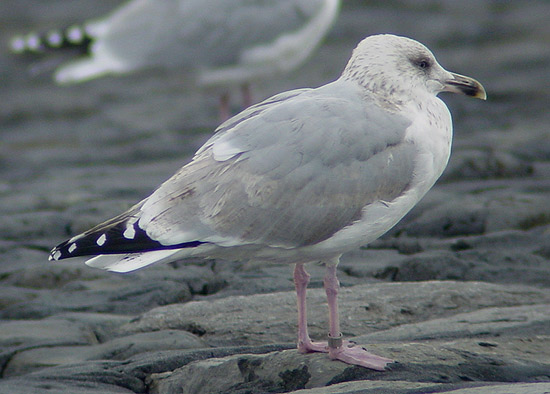 Herring Gull- Zilvermeeuw (argentatus & argenteus)
Herring Gull- Zilvermeeuw (argentatus & argenteus)
(last update:
Herring Gull plumages:
hg 1cy July
hg 1cy August
hg 1cy September
hg 1cy October
hg 1cy November
hg 1cy December
hg 2cy January
hg 2cy February
hg 2cy March
hg 2cy April
hg 2cy May
hg 2cy June
hg 2cy July
hg 2cy August
hg 2cy September
hg 2cy October
hg 2cy November
hg 2cy December
hg 3cy January
hg 3cy February
hg 3cy March
hg 3cy April
hg 3cy May
hg 3cy June
hg 3cy July
hg 3cy August
hg 3cy September
hg 3cy October
hg 3cy November
hg 3cy December
hg sub-ad January
hg sub-ad February
hg sub-ad March
hg sub-ad April
hg sub-ad May
hg sub-ad June
hg sub-ad July
hg sub-ad August
hg sub-ad September
hg sub-ad October
hg sub-ad November
hg sub-ad December
hg ad January
hg ad February
hg ad March
hg ad April
hg ad May
hg ad June
hg ad July
hg ad August
hg ad September
hg ad October
hg ad November
hg ad December
(2 images) Herring Gull 3cy H-107901 (argenteus), October 18 2002, Westkapelle, the Netherlands (51.33N-03.25E).
A bird with a Belgian ring: Bruxelles Belgium H-107901, ringed as pullus on July 06 2000 at Zeebrugge (51.20N 03.11E). Primaries P1-P8 are fully grown. Most of the wing-coverts show an obvious brown hue and are worn at the fringes.
From June to October, a complete moult
will bring 3cy argenteus in so-called "third winter" plumage.
By October, when the complete moult is finished,
the head will show extensive 'winter streaking', mottled brown contrasting
with the white breast as in an executioner's hood. The scapulars and
mantle are pale adult-like grey.
By the end of the complete moult (October), all wing-coverts have been
replaced, most to plain grey feathers. Immature patterns can often be
found in the lower tertials, greater coverts and outer lesser coverts (the
carpal edge).
During the summer, the primaries were moulted to third generation. The
first inner primaries are dropped by late May and the outer primary P10
will be dropped by late August. The primary moult is completed by
late-October
in argenteus,
when the new outer primary P10 is fully grown. The third generation
primaries are clearly adult-like, with the inner primaries P1-P4 plain
grey with a white tip. The outer-wing shows a clear black triangle,
extending on the greater primary coverts. From P4 outwards, the primaries
show a black sub-terminal band. The white primary tips are obvious in the inner
primaries, but often smaller on P9 and P10. P10 has a small white mirror
(lacking in some birds). The new tail-feathers will be white, with clear immature
black markings. The iris is pale brown-yellow.

(image above) H-107901 (argenteus), October 18 2002, Westkapelle, the Netherlands (51.33N-03.25E).
(image below) H-107901 (argenteus), November 16 2002, Westkapelle, the Netherlands (51.33N-03.25E).
Another image of H-107901, one month later. Still extensive patterning on tertials and wing-coverts. The small tips on the outer primaries, black in the tail, diffuse brown hue on upper-parts and the typical immature coloration of the bill point to 3cy.
